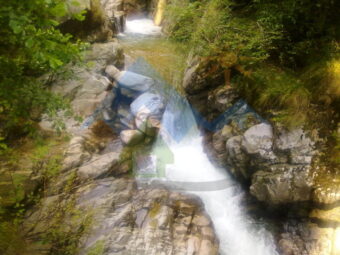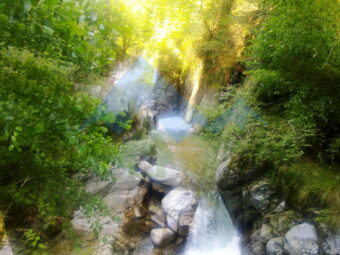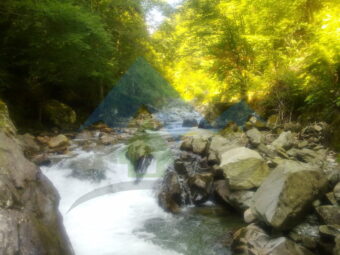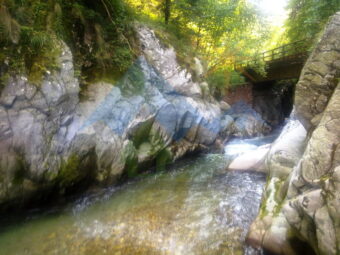Gilortul, whose name is believed to have Dacian origins, springs from the Parâng Mountains, more precisely from under the Parângul Mare Peak (2519 m), through two main springs located at an altitude of almost 2350 m, being immediately flanked on the right by Vf. Mândra and to the left by Vf. Gruiu. After a long intramontane route with gorges, precipices and waterfalls, it comes out at Novaci.
Access is from the town of Novaci, climbing north along the Gilort River. The natural setting, surrounded by forested mountains, makes the Gilort Gorges a great place to spend a pleasant weekend camping. The road is accessible, but not modernized, so higher-guarded cars are recommended for the climb upstream.






The Gilortul is stocked with trout, but fishing is strictly forbidden, especially upstream.
Initially, the orientation of the river is from north-west to south-east, receiving on the left side:
- Setea Mică-Vest stream, which collects the waters between the Ghereșul and Stâncior peaks, joining with the Gruiu stream before flowing into Gilort;
- Setea Mica-East stream, which collects its waters between the Setea Mica and Setea Mare hills.
Then, after heading south, it receives on the right side:
- Tărtărău stream, flowing from under Vf. Tărtărău from the Groapa ridge;
- the stream Măcăria, which in turn gathers four tributaries on the right side, of which the best known is Cătina, after which it continues its course in the original direction and receives, on the left side:
- Pleșcoaia stream (or Setea Mare), flowing from below Vf. Setea Mare and Vf. Pleșcoaia from Câlcescu ridge;
- Romanu stream, which flows in its final stretch along the Roman Valley, after joining the streams Mohor and Păpușa, coming from under the peaks with the same names, then the streams Mioarele and Romii, on the right side.
Further on, it takes in the Calului and Redeiu streams on the right and the Dâlbanu and Rânca streams on the left, before redirecting its course southwards to Novaci.


